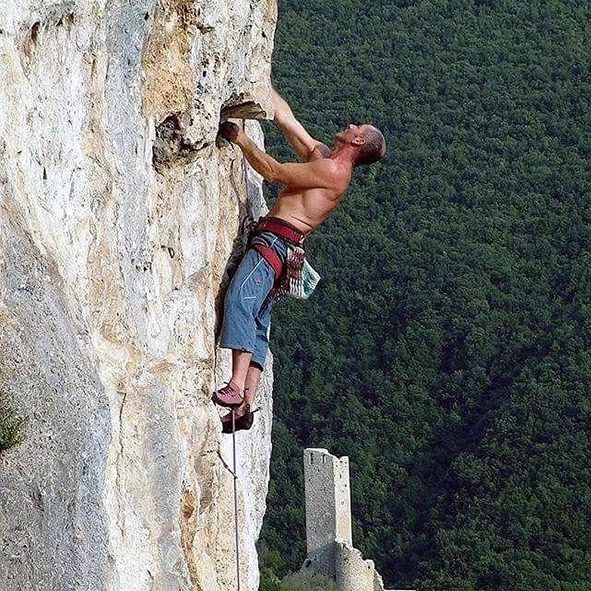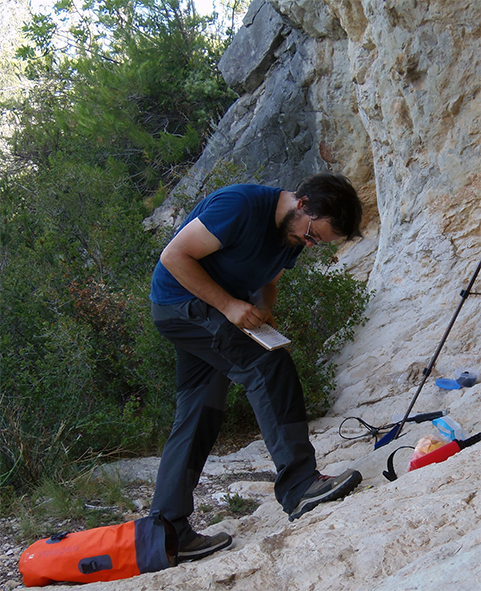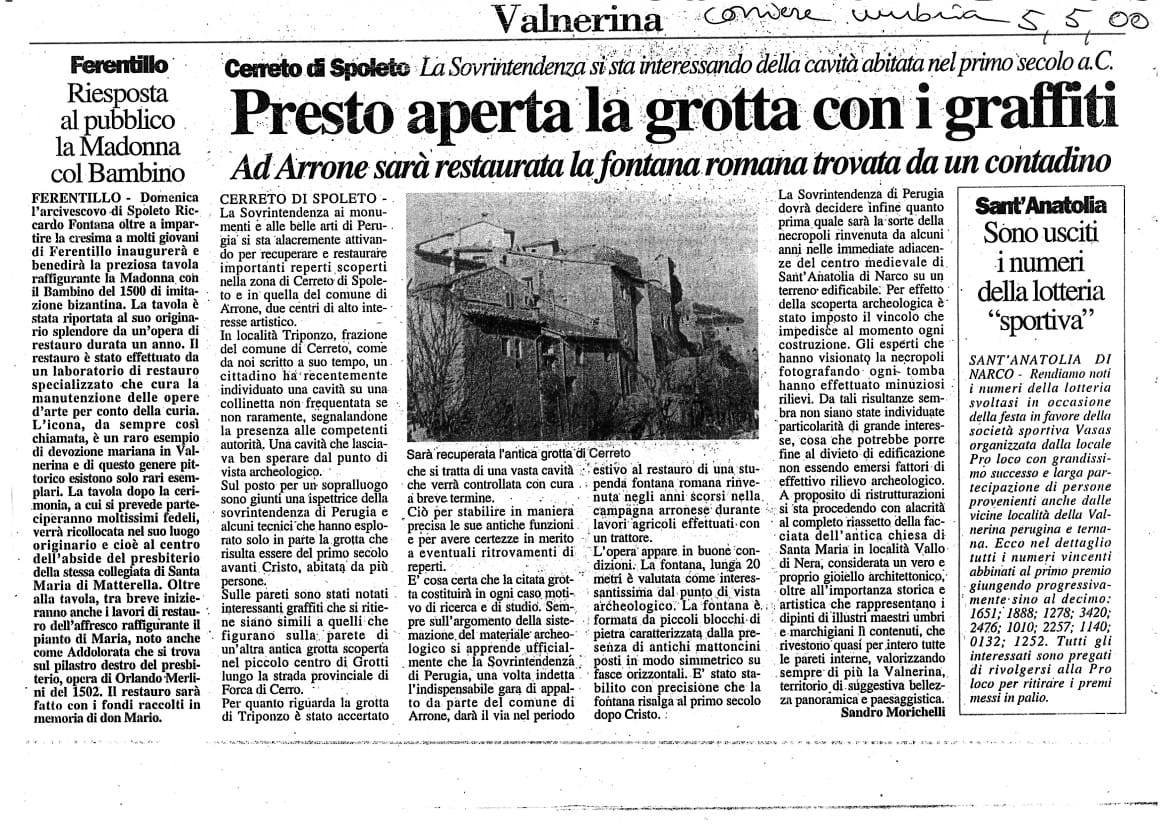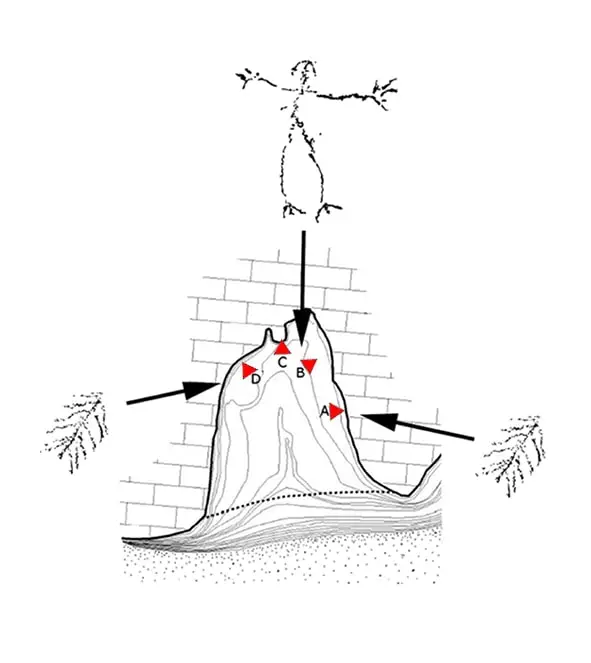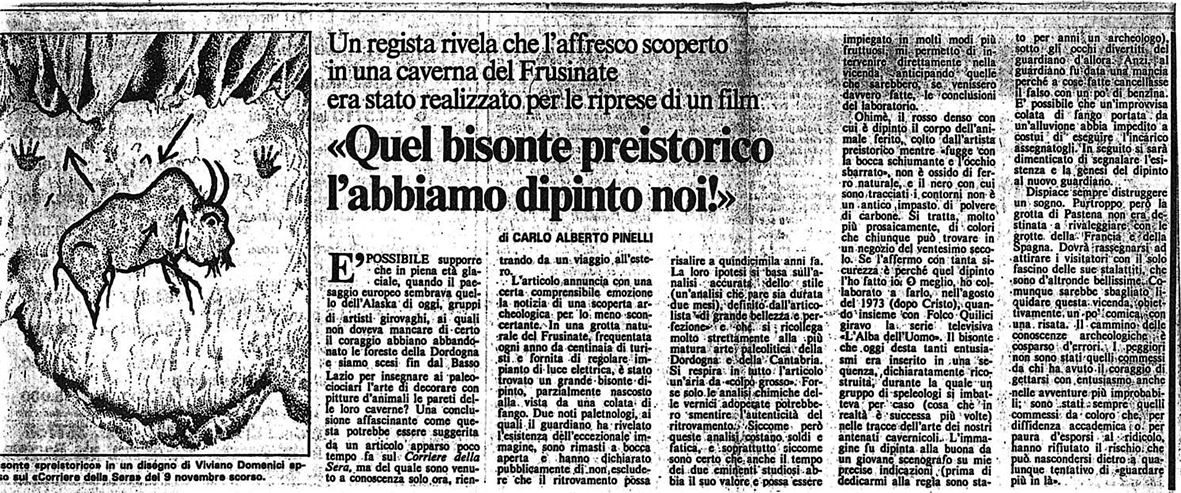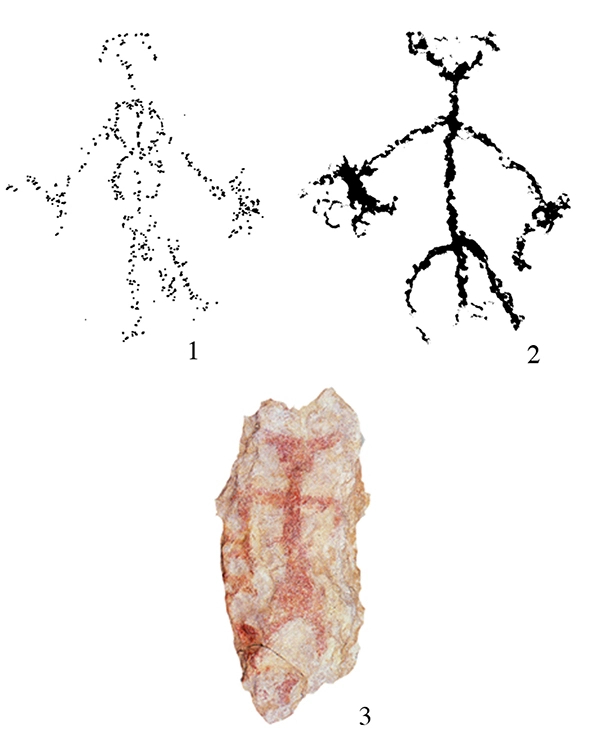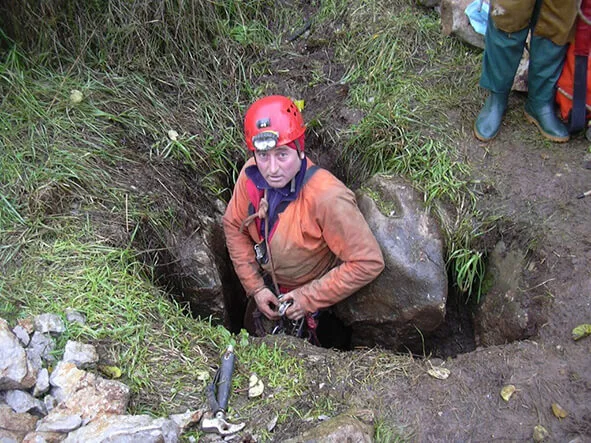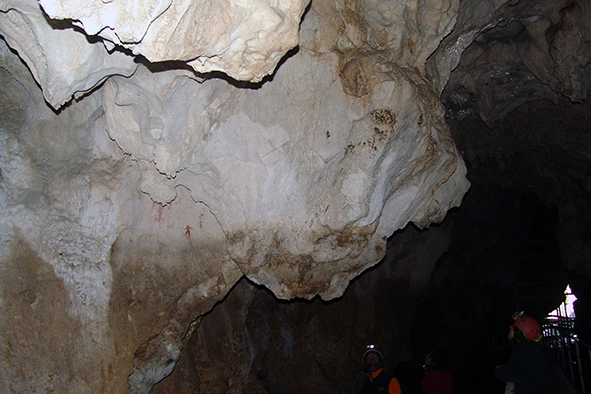Rock art of Umbria (Central Italy)
Initial Discovery and Systematic Surveys (2000-2010)
In this region, following the initial rock art discoveries at Riparo di Pale (Foligno, Perugia) and Riparo del Gabbio (Ferentillo, Terni) made in the late 1990s by the climber and artist Mr. Feliciano Benci of Foligno (Fig. 1), systematic surveys were conducted by the archaeologist Dr. Tommaso Mattioli (Fig. 2) in the early 2000s. These surveys resulted in the recording of ten new rock art sites, all but one featuring paintings. The detailed analysis was published in 2007 as a monographic volume of the 'Quaderni di Protostoria' series of the University of Perugia(1), curated by Prof. Gian Luigi Carancini. In 2012 a selection of the five most preserved and representative rock art sites of this region was published in the conference proceedings of the Istituto Italiano di Preistoria e Protostoria of Florence (2). These selected painted rock art sites are Riparo di Pale (Foligno, Perugia), Riparo delle Formiche Rosse (Santa Anatolia di Narco, Perugia), Riparo del Gabbio (Ferentillo, Terni), Riparo delle Mummie (Ferentillo, Terni), and Riparo dello Schioppo (Scheggino, Perugia).
Example of red colour rock art praying figure from Riparo di Pale in 2004: AMS dating indicates that the figure was painted between 5661±36 BCE 2σ and 1569±11 BCE 2σ
(photo by T. Mattioli)
Among the painted sites, Riparo di Pale stands out. This is a small shelter features red figures of praying anthropomorphs, deliberately executed over some lines of rainwater seeping along cracks and joints in the vertical wall: AMS dating indicates that one praying figure was painted between 5661±36 BCE 2σ and 1569±11 BCE 2σ, roughtly spanning the Early Neolithic to the Middle Bronze Age (3). Riparo delle Formiche Rosse exhibits an intriguing spatial arrangement of pictograms (Fig. 4). Tree-like anthropomorphic motifs in black colour are depicted on the vertical walls on both sides of this small triangular fissure, while two schematic anthropomorphs, also in black, are depicted on the ground at the vertex of this crevice, at the innermost point of the rock shelter. One anthropomorph is incomplete, while the other features a T-shaped face and bird-like feet. Another noteworthy aspect of the rock art in this region is found in Riparo delle Mummie I, where the rock surface, decorated with black motifs (caprids, phi-shaped anthropomorphs, geometric symbols) was previously prepared with a layer of red ochre.
Recent limited progress in rock art research (2010-2020)
Another 20 years passed before new painted sites were found in Lazio. In the late 1970s, two local archaeology enthusiasts Antonio and Maurizio Panimolle (1948-) discovered Morra di Colecchia (Rocca Canterano, Rome). This site is a unique natural structure resembling a dolmen (Fig. 4), formed by large and irregular blocks of limestone collapsed from Mt. Cerasolo. The rock art primarily consists of numerous fine engravings depicting tree-shaped figures, phytomorphic motifs, and lines, possibly created during the Late Mesolithic(5).
Of particular interest is a phi-shaped figure painted in red ochre, superimposed onto the engravings of surface C, which was prominent in the 1980s but has since mostly disappeared. Based on superimposition and iconographic comparisons, this figure can be dated to the Neolithic age. In 1972, the cave explorers Vittorio Castellani and Giancarlo Guzzardi from Rome, while participating in a training session of the National Alpine Rescue Corps of the Italian Alpine Club (CAI) conducted in the karst area of Grotte di Pastena (Pastena, Frosinone), documented several deep vertical linear incisions covered by carbonate concretions on the walls of the cave's fossil branch(6). Interestingly, in the same cave, a few years later in 1981, some paintings of bison and hunting scenes created as set decoration for a film shoot were mistaken, for a brief period, as authentic. These paintings were created, as also reported in the newspapers of the time (Fig. 5), by the director, mountaineer, and environmentalist Carlo Alberto Pinelli for a television series directed by the esteemed Italian documentary filmmaker Folco Quilici. Finally, in 1984 the questionable human figure depicted in black at Riparo Cristina (Terracina, Latina) was discovered by self-educated archaeologists Piero Cerelueo from Tivoli(7).
-
References
- (1) Mattioli, Tommaso: L'arte rupestre in Italia Centrale. Umbria, Lazio, Abruzzo, Quaderni di Protostoria, IV, Ali&No, Perugia, 2007.
- (2) Mattioli, Tommso: L'arte rupestre preistorica e protostorica dell'Umbria, Preistoria Alpina, Museo Tridentino Scienze Naturali, 46(II), 155-163, 2012
- (3) Mattioli, Tommaso: La datazione 14C delle concrezioni sigillanti una pittura rupestre del riparo di Pale (Foligno,Perugia). Preistoria Alpina, 46(II), 165-166, 2012.
- (4) Priuli, Ausilio and Sgabussi, Gian Claudio: I disegni a carboncino del Riparo Roberto (LT). Paper presented at the Atti della XXVIII Riunione Scientifica dell'Istituto Italiano di Preistoria e Protostoria "L'Arte in Italia dal Paleolitico all'Età del Bronzo", in memoria di Paolo Graziosi, Firenze, 20-22 novembre 1989, 1992.
- (5) Mattioli, Tommaso: L'arte rupestre pre-protostorica del riparo sottoroccia di Morra di Colecchia (Roccacanterano, Roma). Paper presented at the Atti del IV Incontro di Studi sul Lazio e la Sabina, Roma, 29-31 Maggio 2006, 2007.
- (6) Castellani, Vittorio & Guzzardi, Giancarlo: Graffiti preistorici nelle Grotta di Pastena. Memorie della XI Rassegna Speleologica Italiana, II, 57-60, 1974.
- (7) Ceruleo, Piero and Zei, Marcello: La figura umana del Riparo Cristina (M. Ausoni - Latina). Studi per l’Ecologia del Quaternario, 6, 125-127, 1984.
- (8) Mattioli, Tommaso: L'arte rupestre del riparo sottoroccia di Grotti (Cittaducale, Rieti). Quaderni di Protostoria, 3, 1-17, 2006
- (9) Broglio, Alberto and Dalmieri, Giampaolo: Pitture paleolitiche nelle Prealpi venete (Vol. Numero Speciale), 2005
- (10) Petitti, Patrizia, Mogliazza, Silvia, Mattioli, Tommaso, Pessolano, Umberto, Mecchia, Gianni, Piro, Maria, Di Filippo, Michele, Di Nezza, Mario, Cecchini, Flavio, Margottini, Siro, Toro, Beniamino, De Leo, Damiana and Savella, Carmela: Grotta Antica. Primi dati sul complesso archeologico. Daidalos. Studi e Ricerche del Dipartimento di Scienze del Mondo Antico, 10, 1-2, 2010
- (11) Mattioli, Tommaso: Le pitture rupestri della grotta dell'Arco di Bellegra (Bellegra, Roma). Paper presented at the Atti del VI Convegno di Studio sul Lazio e la Sabina, Roma, 4-6 Marzo 2009, 2010.
- (12) Mecchia, Gianni, Mecchia, Marco, Piro, Maria and Barbati, Maurizio: Le grotte del Lazio: i fenomeni carsici, elementi della geodiversità. Roma: Edizioni ARP, 2003.
- (13) Buccellato, Cecilia and Tusa, Sebastiano: Una nuova lettura delle pitture della Grotta di Cala dei Genovesi a Levanzo (Trapani). Preistoria Alpina, 46, 7-19, 2012.
Contents of this page
